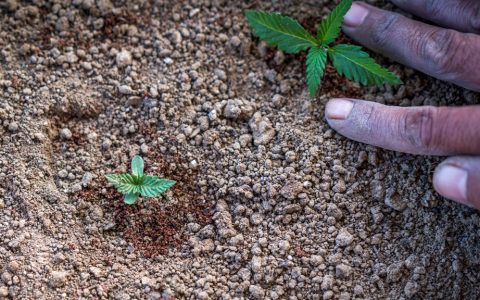Pruning, or defoliation, is a technique that keeps your cannabis plants healthy and growing properly. By removing small amounts of foliage during various phases of the life cycle, growers can increase a crop’s yield and potency by allowing light to hit bud-producing nodes more directly.
All growers perform some light pruning, but there is a different and more advanced approach to plant training: extreme defoliation. This practice requires the mass removal of fan leaves and foliage from an entire canopy during key phases in the cultivation cycle.
We’ll talk about two prominent extreme defoliation techniques, schwazzing and back-building, and how they push the boundaries of defoliation. Coming with a high risk yet offering high rewards, these techniques polarize opinion. Neither method is recommended for beginners, and growers experimenting with these practices should do so with caution.
If you are interested in these techniques, try performing them on one plant at a time. Experimentation in the garden is highly encouraged, just be sure to start slow to reduce the odds of losing an entire crop.
Schwazzing
From Joshua Haupt’s 2015 book Three a Light, schwazzing takes the idea of defoliation to the next level. According to the book, this practice removes the entire canopy of fan leaves within the first few days of the flowering cycle and then again at the third week.
Joshua Haupt coined the term “schwazzing” to describe the sound of scissors and snipping that takes place during the process. The book’s title refers to getting three pounds of cannabis per light, or about twice as much yield in a harvest or even more.
By the entire canopy, he really does mean every fan leaf below the top two or three nodes. The caveat to this risky maneuver is that the stripped plants must receive proper after-care through a high concentration of nutrients following both defoliations. This is crucial to the recovery process.
By removing the fan leaves on the first day of flowering and again on day 21, the plants will be able to replenish the lost foliage before all of their energy transitions toward bud development. By supplementing with a high-nutrient feeding, the plants should push through any shock they may have undergone.
What’s the Upside to Schwazzing?
According to the book, the successful implementation of this technique can promote a massive uptick in the yield of a plant. But keep in mind, neither the book itself nor any review of schwazzing—also called heavy pruning or heavy defoliation—has given an exact explanation for why the practice is so successful.
According to the book, the successful implementation of this technique can promote a massive uptick in the yield of a plant.
Some growers suggest that the practice of removing such a large amount of foliage from a plant in this stage of its development may trigger a defense mechanism, tricking the plant into developing more buds as a survival technique.
One possible explanation points to the fact that cannabis is a wind-pollinated species, and the removal of a massive amount of fan leaves may trigger growth hormones to swell buds as a last ditch effort to receive incoming pollen from a nearby male stamen.
Another possible explanation is that the removal of fan leaves promotes airflow throughout the plant and in turn, more vigorous bud growth. However, these hypotheses have not been backed by any study.
The Downsides of Schwazzing
Despite praise and success stories, there is a high risk of crop failure with this method. When it comes to overall plant health, even the heartiest of cultivars will experience some amount of shock after this process.
Unless the grower has expertly dialed in every other aspect of their growing process—including lights, grow medium, temperature, humidity, airflow, CO2, and more—simply feeding a plant more nutrients won’t suffice.
Even if everything is dialed in and plants are properly cared for, there is still a chance that they will die under this extreme stress. Some genetics might never fare well under such circumstances and some may handle the process better than others.
The bottom line is that although schwazzing may work under ideal circumstances, it’s not a method of defoliation that should be practiced without proper experience. This is not recommended for novice growers or anybody working with sub-par genetics or below-average equipment.
Back-Building
Whereas schwazzing increases the overall yield of a cannabis harvest, back-building aims to build a more dense structure in buds and to create a more aesthetic final product.
Back-building, bud-pinching, and bud-swelling are all terms used to describe the process of clipping the tips off of flowering colas in order to promote growth—this builds out, or causes swelling in the remaining bud.
This advanced defoliation technique needs to be performed roughly halfway through the flowering process, around 3-5 weeks in. The idea behind it is to redistribute the plant’s natural growth hormones to the power areas of the cola.
With this technique, only the very top few calyxes and pistils are snipped, and it’s important to only do one cola at a time over the span of a week or two, so that the plant isn’t thrown into stress or shock.
The Pros and Cons of Back-Building
This technique isn’t meant to increase yields but rather to create more bag appeal by encouraging the plant to produce a more uniform and attractive final product.
The downside is that not all plants will respond appropriately to having their tips clipped off. Some plants may end up fox-tailing, creating stringy and unsightly columns of cola growth that indicate plant stress and have less bag appeal. It can also be a very time-consuming process because plants must be clipped over the course of several weeks, never all at once.







